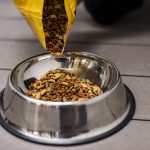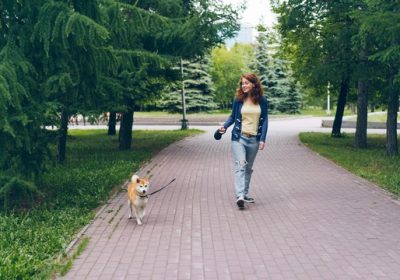Bird Netting for Fruit Trees: A Comprehensive Guide
What is Bird Netting?
Bird netting is a mesh material used to prevent birds from accessing certain areas, particularly gardens and orchards. It is commonly utilised to protect fruit trees from bird damage, ensuring that the fruits remain intact until harvest.
Why Use Bird Netting for Fruit Trees?
Bird netting is essential for fruit tree protection as it provides a physical barrier that prevents birds from pecking at and damaging the fruits. This method is particularly effective in maintaining the quality and quantity of the yield. Without bird netting, many fruit growers face significant losses due to bird predation.
Overview of Bird Damage to Fruit Trees
Birds can cause extensive damage to fruit trees. They peck at the fruits, leading to bruising and spoilage, and often consume large quantities of the crop. This not only reduces the harvestable yield but also affects the overall health of the trees. Implementing bird netting can mitigate these issues, ensuring a more bountiful and healthy harvest.
Types of Bird Netting
Materials Used in Bird Netting
Bird netting comes in various materials, each offering different levels of durability and effectiveness.
- Polyethylene (PE): This is a lightweight and durable material commonly used for bird netting. It is resistant to UV rays and can last for several seasons.
- Nylon: Nylon bird netting is strong and durable, making it suitable for long-term use. It is also resistant to weather conditions, ensuring longevity.
Structure of Bird Netting
The structure of bird netting can vary, with the two most common types being woven and knitted.
- Woven Bird Netting: This type is made by interlacing threads, creating a sturdy and durable mesh. It is ideal for larger areas and offers excellent protection.
- Knitted Bird Netting: Knitted netting is created by looping threads together, resulting in a flexible and lightweight mesh. It is easier to handle and install, making it suitable for smaller gardens.
Benefits of Bird Netting for Fruit Trees
Protection from Birds
The primary benefit of bird netting is the protection it provides against birds. By creating a physical barrier, it prevents birds from reaching the fruits, thereby reducing damage and loss.
Increased Fruit Yield
With bird netting in place, fruit trees are less likely to suffer from bird predation, leading to an increase in the overall yield. This ensures that more fruits reach maturity and can be harvested.
Environmental Benefits
Bird netting is an environmentally friendly option for protecting fruit trees. It reduces the need for chemical repellents and other harmful methods, promoting a more sustainable approach to pest control.
How to Install Bird Netting
Preparation
Before installing bird netting, it’s essential to prepare the area and gather the necessary materials. This includes choosing the right type of netting, measuring your trees, and ensuring you have the tools needed for installation.
Choosing the Right Netting
Selecting the appropriate netting depends on the size of your trees and the type of birds you are trying to deter. Ensure the mesh size is small enough to prevent birds from getting through but large enough to allow sunlight and air to reach the trees.
Measuring Your Trees
Accurate measurements are crucial for effective installation. Measure the height and width of your trees to determine the amount of netting required.
Installation Techniques
There are two primary methods for installing bird netting: the draping method and the framing method.
- Draping Method: This involves draping the netting over the entire tree, ensuring it covers all sides. Secure the netting at the base to prevent birds from getting underneath.
- Framing Method: This method uses a frame or structure to support the netting, creating a more stable and secure barrier. It is particularly useful for larger trees or areas.
Tips for Effective Installation
- Securing the Netting: Ensure the netting is securely fastened to prevent it from being blown away by the wind. Use stakes, clips, or ties to hold it in place.
- Avoiding Gaps: Check for any gaps or openings in the netting where birds could enter. Seal these gaps to ensure complete protection.
Maintenance and Care for Bird Netting
Routine Inspections
Regularly inspect the netting for any signs of wear or damage. Address any issues promptly to maintain its effectiveness.
Cleaning and Storage
Clean the netting periodically to remove any debris or dirt. When not in use, store the netting in a dry, cool place to prevent deterioration.
Repairing Damage
If the netting becomes damaged, repair it immediately to prevent birds from accessing the trees. Use repair kits or patches to mend any holes or tears.
Challenges and Solutions
Common Problems
- Netting Snags: Bird netting can sometimes snag on branches or other objects, causing tears.
- Birds Getting Trapped: Improper installation can result in birds getting trapped in the netting, causing harm to the birds and damage to the netting.
Solutions
- Using Soft Mesh: Opt for soft mesh netting to reduce the risk of snags and tears.
- Installing Properly to Prevent Entrapment: Ensure the netting is installed correctly, with no gaps or loose ends where birds could get trapped.
Alternatives to Bird Netting
Bird Scare Devices
Devices such as reflective tapes, scarecrows, and noise machines can deter birds without the need for netting.
Protective Bags
Individual fruit bags can be placed over the fruits to protect them from birds. This method is labour-intensive but effective for small-scale protection.
Chemical Repellents
Chemical repellents can be applied to the trees to deter birds. However, this method is less environmentally friendly and may require frequent reapplication.
Environmental Considerations
Wildlife-Friendly Netting Options
Choose netting that is safe for wildlife, with a mesh size that prevents entanglement. Opt for biodegradable materials to minimise environmental impact.
Minimising Impact on Non-Target Species
Ensure the netting does not harm non-target species such as bees and beneficial insects. Proper installation and regular inspections can help mitigate these risks.
Case Studies and User Experiences
Success Stories
Many fruit growers have successfully used bird netting to protect their crops, resulting in increased yields and reduced losses.
Lessons Learned from Failures
Some users have encountered issues such as improper installation or inadequate netting, leading to bird damage. Learning from these experiences can help improve future practices.
Frequently Asked Questions (FAQs)
When is the Best Time to Install Bird Netting? The best time to install bird netting is just before the fruits start to ripen, as this is when they are most vulnerable to bird damage.
How Long Does Bird Netting Last? The lifespan of bird netting depends on the material and quality. Polyethylene netting can last several seasons, while nylon netting may last even longer with proper care.
Can Bird Netting Protect Against Other Pests? Bird netting primarily protects against birds, but it can also deter some larger pests such as squirrels and rabbits. However, it may not be effective against smaller insects.
Is Bird Netting Harmful to Birds? Properly installed bird netting is generally safe for birds. However, improper installation can result in birds getting trapped or injured. Regular inspections and maintenance can prevent such incidents.
What Size Mesh is Best for Bird Netting? The ideal mesh size depends on the type of birds you are trying to deter. A mesh size of 1-2 cm is suitable for most small birds, while larger birds may require a slightly larger mesh.
Conclusion
Bird netting is an effective and environmentally friendly solution for protecting fruit trees from bird damage. By choosing the right type of netting, installing it correctly, and maintaining it properly, fruit growers can ensure a bountiful and healthy harvest. With the right approach, bird netting can provide long-term protection and peace of mind.
References
- https://www.bird-x.com/protective-netting-for-fruit-trees-shrubs/
- https://www.gardeningknowhow.com/edible/fruits/fegen/protecting-fruit-trees-from-birds.htm
- https://www.gardensalive.com/product/fruit-tree-netting
- https://www.abc.net.au/everyday/how-to-net-fruit-trees-to-protect-your-produce/11927164
- https://www.agric.wa.gov.au/fruit/bird-netting-fruit-trees








